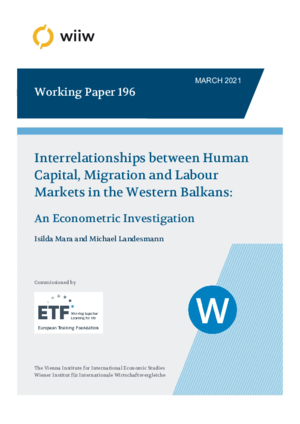Interrelationships between Human Capital, Migration and Labour Markets in the Western Balkans: An Econometric Investigation
Michael Landesmann and Isilda Mara
wiiw Working Paper No. 196, March 2021
42 pages including 7 Tables and 8 Figures
The high outward mobility that has characterised the countries in the Western Balkan (WB) region over the past three decades is often seen as tightly linked to severe labour market imbalances and persistently low utilisation of human capital over time. To shed light on these issues, we estimate a system of equations that accounts for the effects of labour market determinants and human capital on migration and vice versa. The period under analysis is 2005-2019 and considers mobility from five of the WB countries to the EU15. The empirical results confirm the importance of wage gaps and their changes as an important pull factor for driving outward mobility from the WB region that can be persistent over time. Also, gaps in human capital emerge as a powerful determinant for explaining mobility into countries where returns on human capital are higher.
Keywords: Migration, Labour Markets, Southeast Europe, Balkans, pVAR modelling, European integration
JEL classification: F22, J60, J61, O15, C32, C13, P20, P27
Countries covered: Albania, Bosnia and Herzegovina, European Union, Montenegro, North Macedonia, SEE, Serbia, Western Balkans
Research Areas: Labour, Migration and Income Distribution
